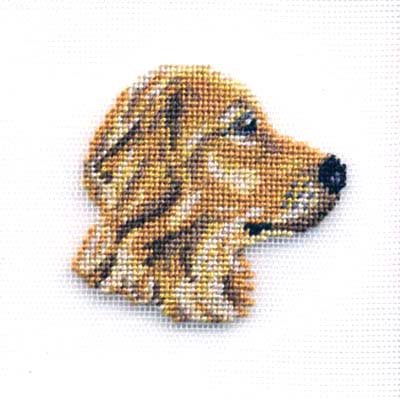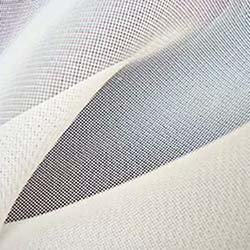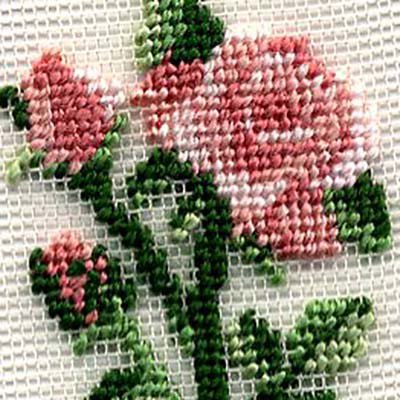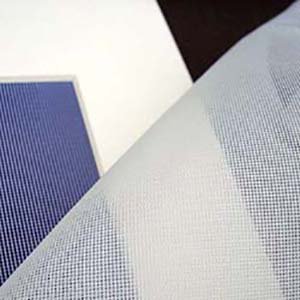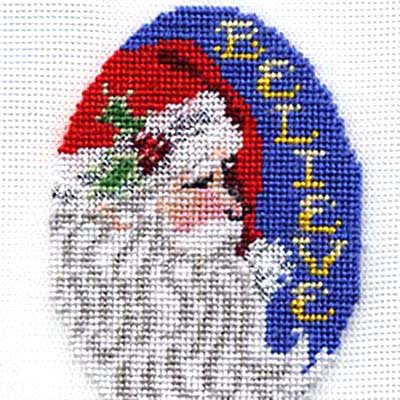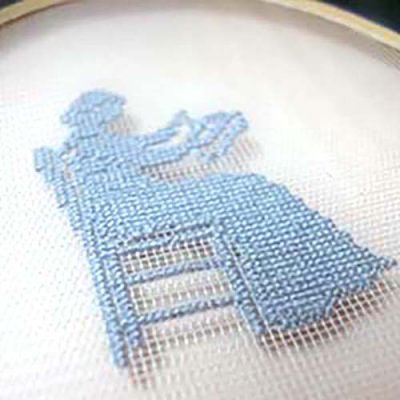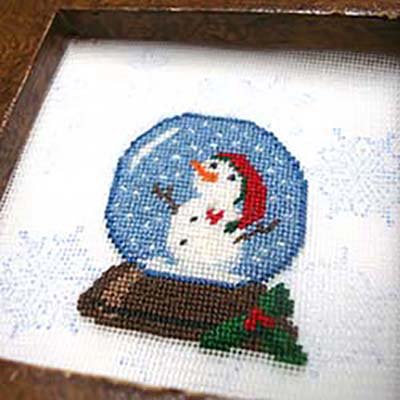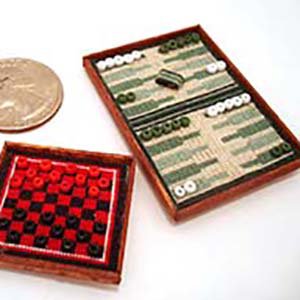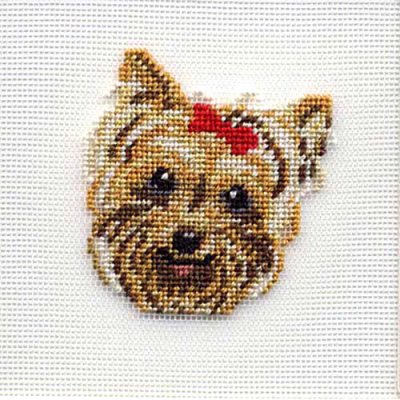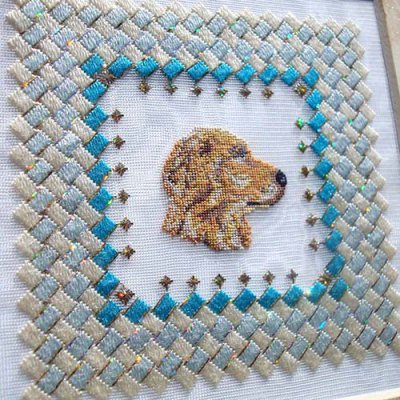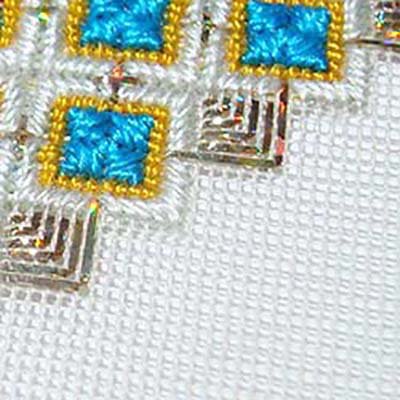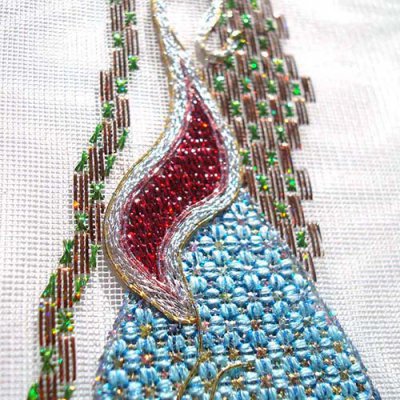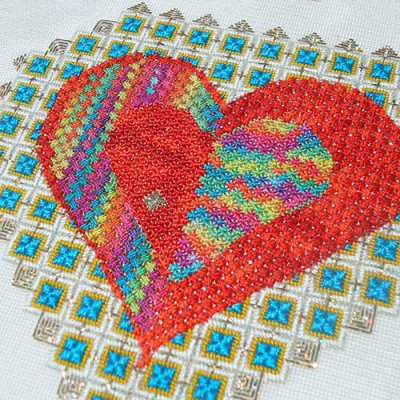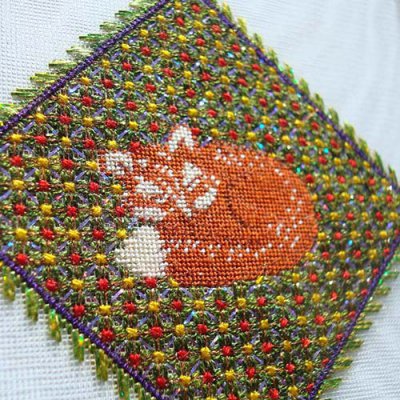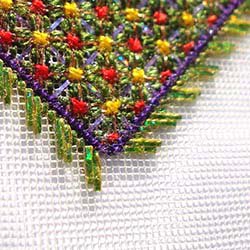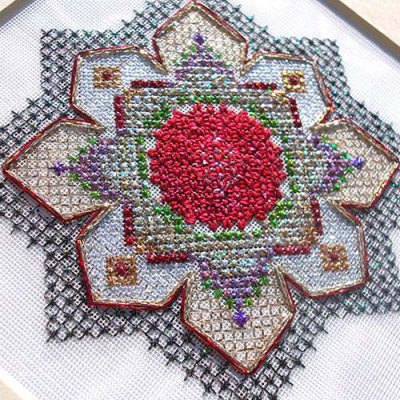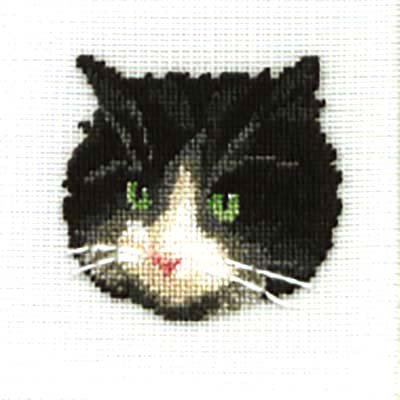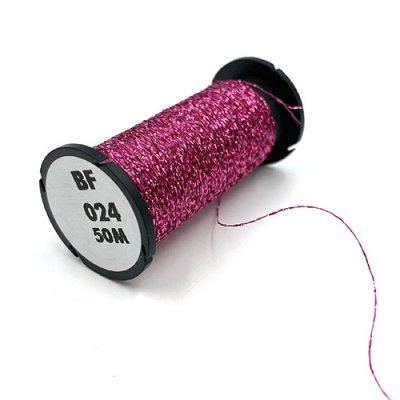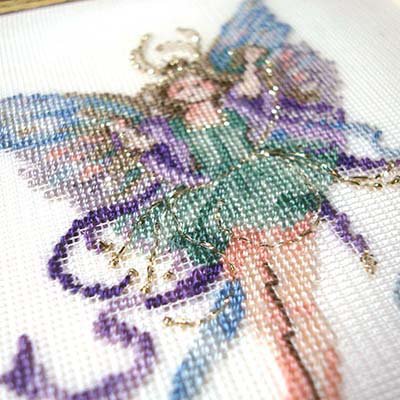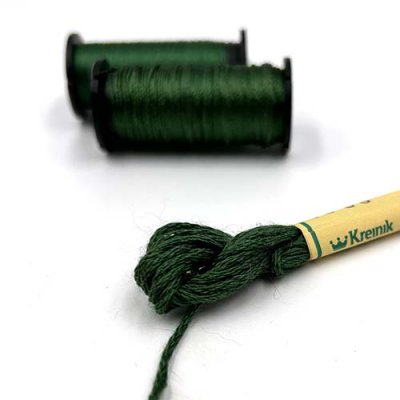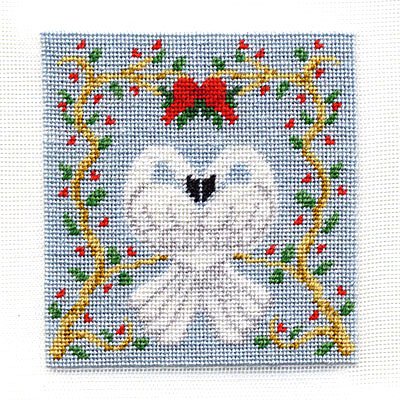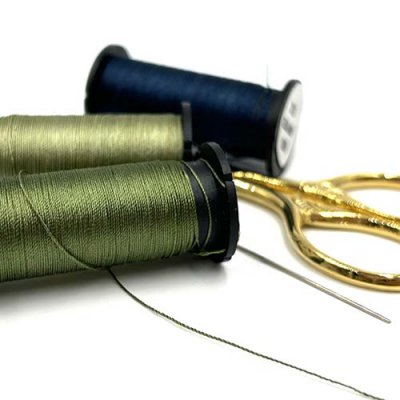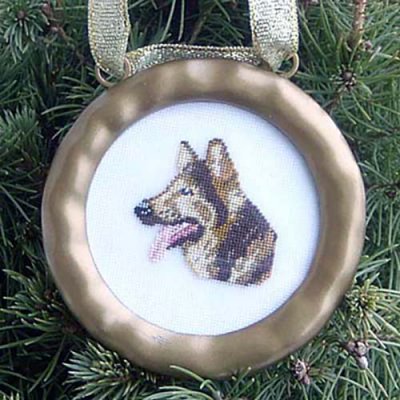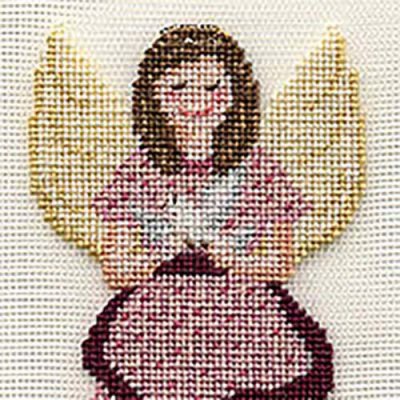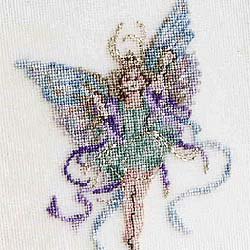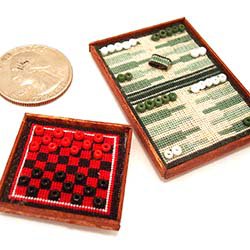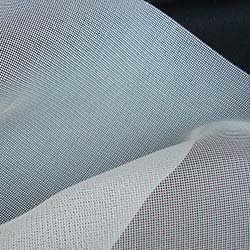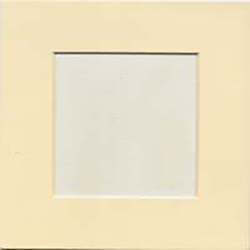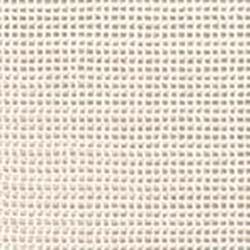How to stitch on silk gauze
Silk gauze is a 100% pure filament silk canvas. The silk threads are fine but very strong. Silk gauze is woven in a leno structure, which increases the stability of the canvas. Leno weave actually interlocks the weft threads making it almost impossible for them to shift.
When to stitch on silk gauze?
Stitch on fine counts of silk gauze anytime you want a small, delicate piece of needlework. Miniaturists and doll house enthusiasts enjoy silk gauze needlepoint pieces because you can achieve realistic looking items. For example, doll house rugs, pillows, pictures, and bell pulls can be stitched to scale: 40-count silk gauze is perfect for 1-inch to 1-foot scale.
Silk gauze work is also popular among needlepointers looking for something different to stitch on or for making detailed embroidery like jewelry.
How do you stitch on silk gauze?
The first step in stitching on silk gauze is choosing a project. Almost any charted cross stitch design can be used for silk gauze needlepoint. Designs without quarter stitches, blended colors, backstitches, or elaborate color changes make the most successful silk gauze needlepoint projects. You stitch over one thread on silk gauze.
Continental (or tent) stitch is the appropriate stitch for silk gauze because it makes for a smooth, even silk gauze needlework. Also, it is easier to stitch tent through such petite holes. The use of tent stitch, for example, will have a maximum of two threads in a hole whereas cross stitch could have as many as four stitches per hole. Generally, you stitch with silk threads on silk gauze.
Stitching tips
Sharp scissors, good lighting, and magnifiers can make stitching on silk gauze a breeze. Starting at the top of a chart makes it easier to keep your place on the chart while stitching. A magnet board will also help, or simply cross out stitches on the chart that have been completed as you go along.
Choosing the appropriate needle for silk gauze is also important, as using a needle that is too large can distort the canvas. Kreinik’s silk gauze kits and framed silk gauze includes a needle.
When stitching on silk gauze, a neat back is especially important if some of the background is left unstitched. When starting a thread, try to use an ‘away waste knot’ to begin. You may sometimes be able to end a thread using this same technique, resulting in less bulk on the back of your work. When ending threads by ‘running’ under stitches, use caution so that the tension of the stitches is not changed.
A dark piece of cloth behind your work makes the holes of the silk gauze ‘pop’ and you can see the threads that need to be covered.
Needle sizes for silk gauze
gauze count — needle size — Kreinik thread to use for tent stitch or half-cross
- 18-count — #20 Tapestry Needle — 6 strands of Silk Mori; Canvas #24 Braid or Medium #16 Braid; 1/16" Ribbon
- 20-count — #22 Tapestry Needle — 5 strands of Silk Mori; Medium #16 Braid or Tapestry #12 Braid; 1/16" Ribbon
- 28-count — #26 Tapestry Needle — 2 strands of Silk Mori; Fine #8 Braid; 1/16" Ribbon
- 30-count — #26 Tapestry Needle — 2 strands of Silk Mori; Fine #8 Braid
- 32-count — #28 Tapestry Needle — 2 strands of Silk Mori, 1 strand of Silk Bella, Fine #8 Braid or Very Fine #4 Braid
- 34-count — #28 Tapestry Needle — 1 strand of Silk Mori, Silk Bella, Very Fine #4 Braid
- 35-count — #28 Tapestry Needle — 1 strand of Silk Mori, Silk Bella, Very Fine #4 Braid
- 40-count — #28 Tapestry or #10 Crewel — 1 strand of Silk Mori, Silk Bella, 1 strand of Blending Filament
- 42-count — #28 Tapestry or #10 Crewel — 1 strand of Silk Mori, Silk Bella, 1 strand of Blending Filament
- 49-count — #10 Crewel — 1 strand of Silk Mori, Silk Bella, 1 strand Blending Filament
- 50-count — #10 Crewel or #12 Beading — Blending Filament, Cord
- 54-count — #10 Crewel, #12 (Sharp or Beading) — Cord
- 60-count — #12 (Crewel, Sharp or Beading)
- 84-count — #12 (Crewel, Sharp or Beading)
- 90-count — #12 (Crewel, Sharp or Beading)
Availability of silk gauze
Silk gauze can be purchased in several ways:
1. Kreinik mounts silk gauze on mat board, which acts as a frame while stitching or as a mat for the finished piece. This is an economical way to purchase gauze, and various sizes are available. The framed silk gauze from Kreinik comes with a needle, so you are immediately prepared to start stitching.
2. Purchasing silk gauze by the yard will enable you to stitch pieces larger than that allowed with pre-mounted pieces. The silk gauze should then be mounted on a frame or stretcher bars for stitching.
3. Kreinik offers silk gauze in several different counts such as 20-count, 32-count and 40-count. The higher the number, the smaller the canvas "holes".
Stitching with silk gauze can be very rewarding. The detailed needlework that you complete will be admired by many.



